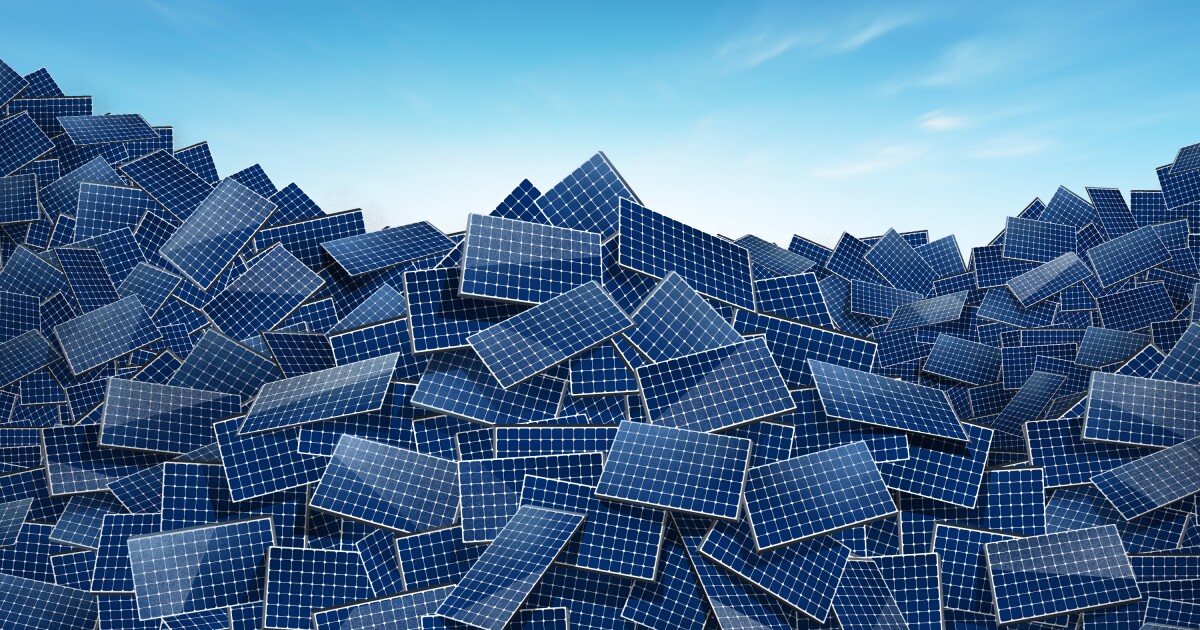California has been a pioneer in pushing for rooftop solar power, building up the largest solar market in the U.S. More than 20 years and 1.3 million rooftops later, the bill is coming due.
Beginning in 2006, the state, focused on how to incentivize people to take up solar power, showered subsidies on homeowners who installed photovoltaic panels but had no comprehensive plan to dispose of them. Now, panels purchased under those programs are nearing the end of their typical 25-year life cycle.
For the record:
An earlier version of this article misattributed a statement by Evelyn Butler, vice president of technical services at the Solar Energy Industries Assn., to Jen Bristol, the group’s senior director of communications. It also misidentified the group as the Solar Energy Industry Assn.
This article has also been updated to reflect the current professional affiliations of Sam Vanderhoof and Jigar Shah and to clarify that 25 years is the typical service life of photovoltaic panels but not a fixed limit. Additionally, in a discussion of transporting photovoltaic panels to recycling or hazardous waste disposal facilities, the word “cells” has been changed to “panels” for accuracy.
Many are already winding up in landfills, where components that contain toxic heavy metals such as selenium and cadmium can contaminate groundwater.
“People just don’t realize that there are toxic materials in those electronics, that it’s fine if it’s just sitting in a box in your house,” said Natalie Click, a doctoral candidate in materials science at the University of Arizona who studies the issue. “But once it gets crushed and put into the landfill, a lot of those toxic chemicals and materials are going to leak into your groundwater.”
Sam Vanderhoof, a solar industry expert and chief executive of Recycle PV Solar, says that only 1 in 10 panels are actually recycled, according to estimates drawn from International Renewable Energy Agency data on decommissioned panels and from industry leaders.
The looming challenge over how to handle truckloads of contaminated waste illustrates how cutting-edge environmental policy can create unforeseen hazards down the road.
“The industry is supposed to be green,” Vanderhoof said. “But in reality, it’s all about the money.”
California came early to solar power. Small governmental rebates did little to bring down the price of solar panels or to encourage their adoption until 2006, when the California Public Utilities Commission formed the California Solar Initiative. That granted $3.3 billion in subsidies for installing solar panels on rooftops.
An aluminum can shortage nearly crippled some California breweries earlier this year. A long-term problem still looms: California’s ineffective recycling apparatus.
The measure exceeded its goals, bringing down the price of solar panels and boosting the share of the state’s electricity produced by the sun. Because of that and other measures, such as requirements that utilities buy a portion of their electricity from renewable sources, solar power now accounts for 15% of the state’s power.
But as California barreled ahead on its renewable-energy program, focusing on rebates and — more recently — a proposed solar tax, questions about how to handle the toxic waste that would accrue years later were never fully addressed. Now, both regulators and panel manufacturers are realizing that they don’t have the capacity to handle what comes next.
“This trash is probably going to arrive sooner than we expected and it is going to be a huge amount of waste,” said Serasu Duran, an assistant professor at the University of Calgary’s Haskayne School of Business in Canada. “But while all the focus has been on building this renewable capacity, not much consideration has been put on the end of life of these technologies.”
Duran co-wrote a recent article in the Harvard Business Review that noted the industry’s “capacity is woefully unprepared for the deluge of waste that is likely to come.”
It’s not just a problem in California but also nationwide. About 140,000 panels are installed every day in the United States, and the solar industry is expected to quadruple in size between 2020 and 2030.
Although 80% of a typical photovoltaic panel is made of recyclable materials, disassembling them and recovering the glass, silver and silicon is extremely difficult.
“There’s no doubt that there will be an increase in the solar panels entering the waste stream in the next decade or so,” said AJ Orben, vice president of We Recycle Solar, a Phoenix-based company that breaks down panels and extracts the valuable metals while disposing of toxic elements. “That’s never been a question.”
This content was originally published here.
